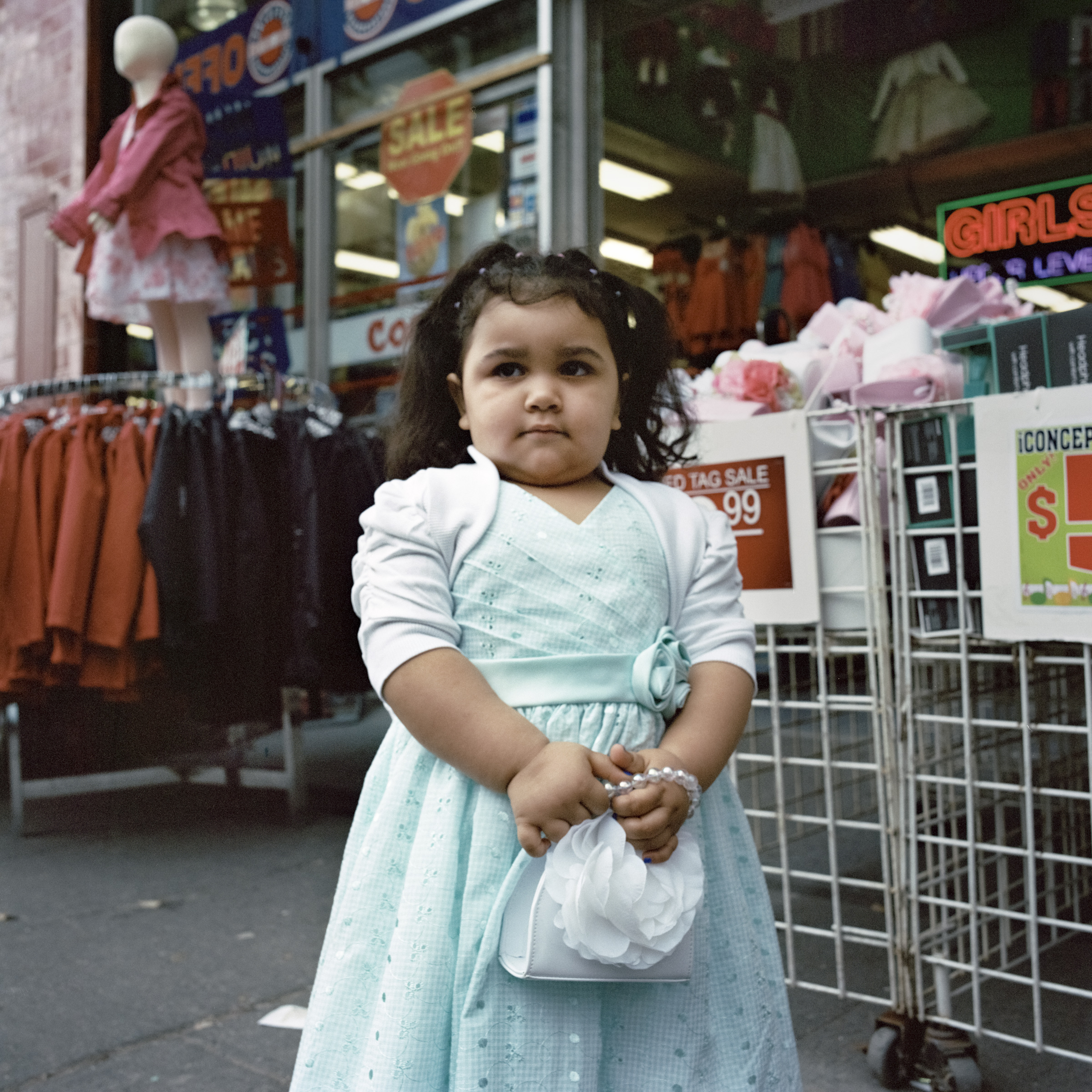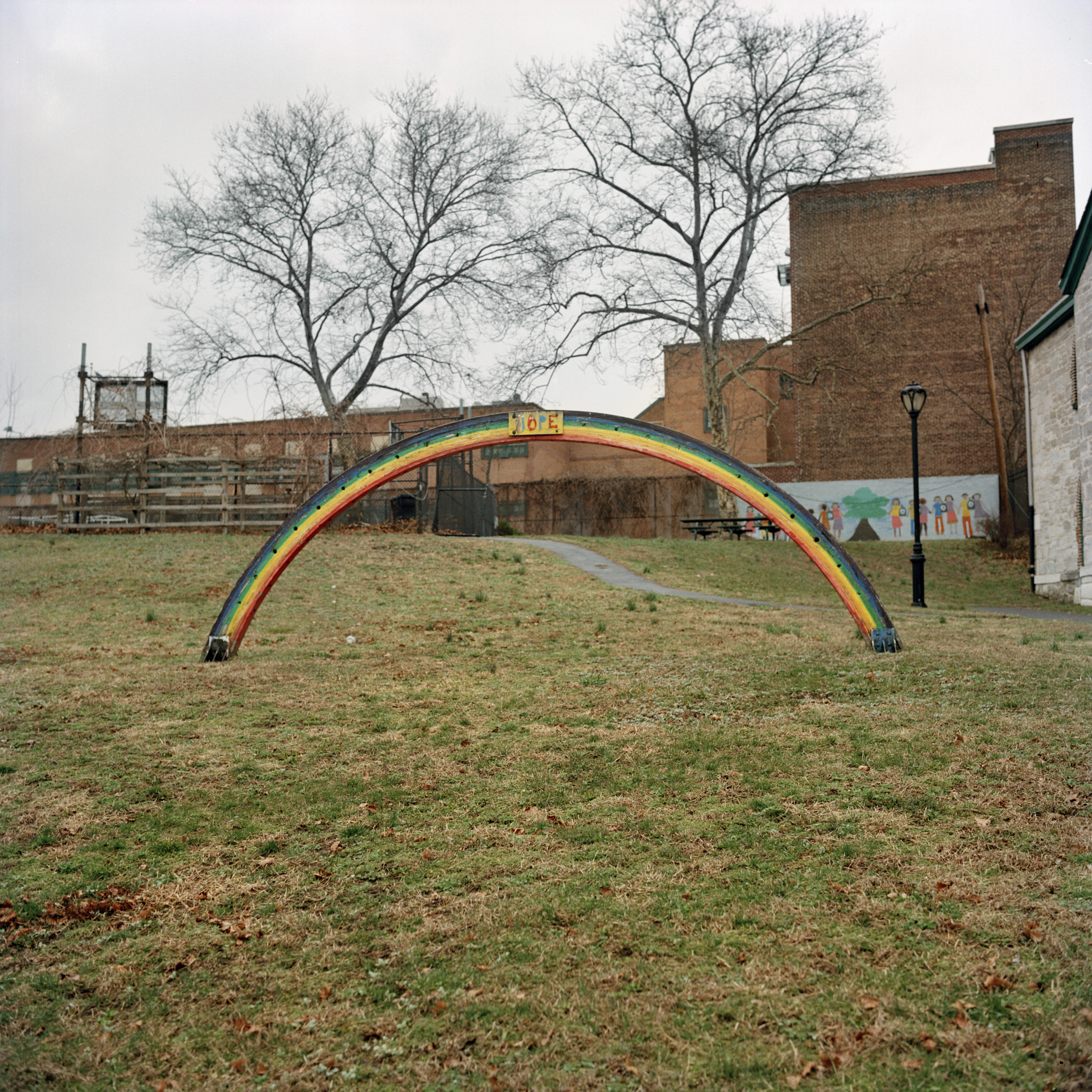Woman Crush Wednesday: Giovana Schluter
© Giovana Schluter
Interview by Mamie Heldman
Giovana Schluter is primarily concerned with the relationships between people and man-made landscapes and how architecture and infrastructure silently express culture and ideology. These ideas continue to pervade in her work, and in her devoted and honest series photographed in and around the South Bronx. In this collection of images, shot in medium format color film, she explores what it means to belong to a space while building a direct relationship to the the community and paying tribute to the identities of its' individuals.
Why were you drawn to the South Bronx when you first began photographing and how has your perception of the place evolved from the beginning to now?
The South Bronx was the first place I experienced in New York. I had just moved here from São Paulo, and was lucky enough to find a spot in this great apartment. Before coming here, I had just graduated from Journalism school and had been developing a project about a squatters movement in São Paulo — actually, about one building in particular, a former luxury hotel. I think that the element that pervades all of my work is the notion of place as simultaneously a maker and a manifestation of culture and ideology. So talking about the South Bronx, even though that was far from being an immediate realization, was a natural continuation of what I was doing before. I’m also very interested in how people organize collectively to assert their voices and rights. When I moved to The Bronx, the first people I met other than my roommates were my landlord and his wife, Mychal Johnson and Corrine Kohut. They are now my friends, and coordinate an organization called South Bronx Unite, that advocates for environmental justice. I believe that my admiration and respect for them and for the other people I’ve met ever since I’ve lived here were the reason why I wanted to pay tribute to the South Bronx, its history and heritage, its agency in relation to itself. I also believe that the process of shooting South Bronx, Downtown Bronx was the process of getting to know the place I had chosen to live, understanding the particularities of its streets and its culture, and what was my place in it.
Although the series began as a project during your year at the International Center of Photography, as a member of the neighborhood yourself, does the work feel personal or reflective of your time in New York?
It does feel personal because the process of shooting this work was the process of getting to know New York. If I feel intimate to this city today it's because of all the time I've spent wandering the streets, getting coffee at bodegas so the people there would let me take their picture, hanging out at laundromats and approaching people at the grocery store. All of this gave me a feeling of familiarity that I don't think would have happened otherwise.
The series seems to alternate between emotional portraits and quiet, almost deadpan landscapes. Would you say this was an intentional decision in representing this community or a reaction to what you observed?
Both answers are true, in my opinion. The intentional decision comes when you sit down and look at what you gathered, but the picture itself can only be a reaction to what you observe. Of course this reaction changes depending on what’s informing my intuition, and how the place (I'm looking at) came to be what it is today. I think the story of this place is a story of people creating and protecting spaces of significance and affection to the best of their ability, against forces that either neglect their needs or predate on what they have built. So I think the deadpan landscapes are actually interruptions of the elements that keep meaningful use of space from happening, and sometimes even attempt at making an inhospitable place a meaningful one. And I believe that's what this work is all about - the tension between what the given space and infrastructure are and what people make of it and hope for it.
© Giovana Schluter
What is the most valuable approach to you when it comes to doing documentary work?
The most valuable thing to me when working is to give myself time, and purposefully slow down if I can. I shoot with 120mm film, so only having 12 frames in a roll does that for me. I think documentary photography gives you this wonderful gift of playing with language and conventions which surround what the acceptable ways of saying things can be. When I'm shooting, I need to be able to stare at the frame for a few minutes and then change my mind about it if I have to. In my experience, that's the only way I can make something that is going to be interesting.
© Giovana Schluter
WCW QUESTIONNAIRE
How would you describe your creative process in one word?
Labour.
If you could teach one, one-hour class on anything, what would it be?
I would teach a class on how to step out of your own head and listen to the things your eyes are telling you. The most visceral problem I face in my creative process is that it always starts with a particular intelectual interest, and sometimes I have a hard time letting go of the readings and let my visual thinking work.
What was the last book you read of film you saw that inspired you?
I’m finishing a book called “How to Read Lacan” by Slavoj Žižek.
What is the most played song in your music library?
I am currently obsessed with this song called Near Death Experience Experience, by Andrew Bird.
How do you take your coffee?
With milk, no sugar.















